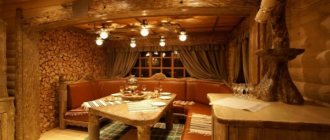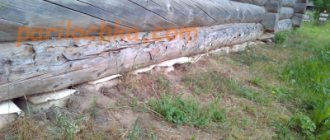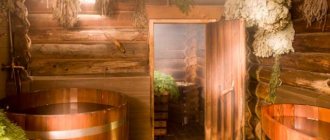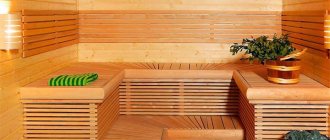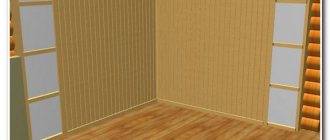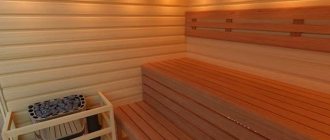Lining is a material that has been used for a very long time. Its first purpose was the usual lining of freight cars. Today it is not used in carriage building, but the name “lining” has been preserved, only its scope has changed somewhat. Now it is considered a good, modern material for cladding wall surfaces. Linden lining refers to materials that are as close as possible to natural wood. This is proven by a unique production method, using high-quality linden wood.
What is
Almost all factories in Russia, whose field of activity is the production of construction wood (timber, boards, logs), also produce the so-called “profiled moldings”. This is what lining, including linden, refers to. What is lining? This is an edged board with a thickness of 7-20 mm. The top layer (front surface) of each is planed. The average width of lime lining is 90-150 mm. This makes it possible to use it as finishing even in non-standard rooms.
All products of profiled moldings have a distinctive feature - a special type of fastening. Each lamella is equipped with two fasteners - a groove on one side, a ridge on the other. Therefore, linden linings are often also called plastic panels (if they are made from it) or MDF.
In the Russian Federation, the most common and popular types of lining are considered to be wooden, made from: linden, oak, pine, larch, alder.
How to choose a lining
In order to make the right choice of material, it is necessary to take into account factors such as quality, appearance and profile. It is worth paying attention to how smooth the surface of the parts is. If upon inspection the slightest deviation is detected, then it is better to refuse the purchase immediately.
It will be important to check the joints of the profiles. They must connect seamlessly with each other. Otherwise, problems may arise during installation.
It is also necessary to check the material for moisture. To do this, lightly tap the lining. If the wood is damp, the sound will be dull, and if it is dry, it will be ringing.
Coating characteristics
In addition to the variety according to the type of wood (this is one of the most important parameters of classifying qualities), each of the manufacturers also divides linden lining according to the following characteristics.
Humidity
The degree of humidity of the facing board can be natural and dry (the indicators of both should be within 10-15%). The difference between them is expressed in quality properties and cost. The dry variety will cost more, since the plant still undergoes an additional stage of processing - removing moisture. This type of lining is less likely to crack and warp.
Geometry and shape of profiles
Here the differences are based on the grade and type of lining:
- Standard;
- Block house;
- Eurolining;
- Under the beam.
Standard indicators (according to GOST) should be (in mm):
- Thickness – 12-25;
- Width – no more than 150;
- The maximum allowed length is 6000.
Gostov lining (12-16 mm thick) is used for finishing walls indoors. With large thickness values (16-25) - in the outer.
Eurolining
Euro lining made from linden is considered the most popular. It has constant indicators (in mm):
- Thickness – 12.5;
- Width – 60-160;
- Length – 1.8-6000.
Blockhouse lining
Material imitating galvanized logs. That is, its front side is not flat, like a regular one, but semicircular, convex. Used only for external wall decoration.
Under the timber
It has a second name - American, because it came to us from there - from overseas. It looks like a planed board equipped with tongues and grooves.
The side edges are cut and accurately emulate a wooden beam.
Types of finishes
Swiss chalet
This design style is best used in a suburban area with a home of any size. We will need a wide lining 6 meters long to decorate the roof. A sloping roof with large angles of inclination and a visor is the central part of the exterior. This element not only creates the feeling of a house in the Alps, but also serves to protect the room from negative environmental factors.
Traditionally, a Swiss chalet has 2 floors with a balcony, or it can be a one-story building with an open terrace.
Inside the house, the interior is also made using lining of various lengths. The walls and ceiling are sheathed using lumber.
Provence One of the most popular interior styles, used both in private homes and city apartments. Coffee shops and small restaurants often prefer this design. The use of living textured material - lining in large quantities - is the basic principle of constructing the Provence style. Lumber, as a rule, is painted in light pastel shades - olive, pale pink, soft lilac. Lightness, a feeling of comfort and homeliness, the absence of unnecessary decor and furniture - true Provence style.
Country This type of design direction is most often used for one space in a living room: living room, kitchen or bedroom. The main goal is to create a rustic, sophisticated style.
Simplicity, but with moderate gloss, comfortable furniture, but without modern trends, and necessarily finishing the walls with high-quality lining (it is advisable to use the highest grades and lumber from expensive tree species).
The interior styles given as examples are far from the only ones. With the help of lining of various lengths, you can make your dream of comfortable, cozy housing come true for any financial opportunity.
Benefits and Features
Linden lining is endowed with a lot of advantages and healing properties, which is why it is often used in lining the internal walls of baths. Among the advantages:
- Linden lining does not darken or deform under the influence of high temperatures;
- Its surface does not overheat or crack;
- Has little weight;
- It is very easy to install.
Having a high level of strength and durability, it is used not only for cladding walls, but also for floors.
The key advantage is the fact that even at high temperatures, resinous secretions do not form on the linden tree.
Thanks to all these properties, linden lining is often used for cladding ceilings and railings in bathhouses and steam rooms.
The front surface of the coating is very smooth, with a pleasant tint, and can have uniform transitions from yellowish to honey color. This makes the interior lighter, which has a beneficial effect on vision.
The only downside is the cost – it’s high.
But considering all the advantages, as well as the healing properties of the material, it’s worth it.
Pros and cons compared to other breeds
But in order to understand something, you need to compare it with alternative options. Since a steam room with deciduous wood, most people will call aspen an alternative to linden. So let’s look at the comparative merits of linden or aspen in a bathhouse. And one more - a little less common - comparison of linden or alder for a bathhouse - which is better?
Which is better: linden or aspen?
In another article, where the properties of linden and aspen lining were considered, we already compared the properties of these two types of wood. You can either follow the link and read the entire article, or stay here and see the table on which our conclusions are based, and, in fact, the conclusions themselves.
So here's the table:
From the columns that show the coefficients of shrinkage and swelling , that is, the change in dimensions under the influence of moistening and loss of moisture, we see that aspen is better than linden for a bathhouse. Although the difference here is not so great as to call aspen a clear favorite.
Interesting: Step-by-step instructions for the best methods for finishing a bath with your own hands
Because it darkens in the bathhouse faster than linden. Otherwise, their properties are very similar. Even if other sources give slightly different densities, they are still fairly close to each other.
Aspen darkens from water
In the store, linden will cost more than aspen, but also not by much. Therefore, go through your priorities - you will have to look for high-quality aspen wood and spend your time on it. If you are ready for this, bet on aspen, and linden will remain for those who prefer the option that is not much worse, but faster, albeit more expensive.
IMPORTANT! In a bathhouse, any(!) wood rots, only the conditions and timing vary. If you are dry after the procedures (see the section on ventilation), then linden will last longer than larch for someone who neglects drying.
And so, of course, linden is practically unable to resist rotting, unless you help it with impregnations. But this also applies to aspen. Yes, it gains hardness under the influence of water, but its resistance to rotting is low.
In general, these two species have very similar characteristics, we recommend aspen , but if you have problems with a good aspen or you just like linden, take it.
Linden or alder?
But of this pair, we prefer linden. Alder is best at the harvesting stage, because linden is often discarded during the initial drying - this is when its warping occurs. Dried linden is quite stable and does not create problems. Alder exhibits minimal warping even at the initial drying stage.
But if you are an ordinary buyer, then it is enough to check the moisture content of the purchased lumber and the presence of warping - any differences from the correct geometry, for example, bends or twists.
Otherwise, these are also two types of wood quite similar to each other. Alder is as inelastic, soft, easy to work with and not resistant to rotting as linden.
ATTENTION! Alder and linden are damaged by metal-wood contact in a humid environment. Therefore, it is advisable to protect screw fastenings from moisture, or abandon them in favor of classic carpentry joints.
If you have a choice, then from black and gray alder you should choose black, it has better technical characteristics.
What else could be the basis for choice - alder has reddish shades and looks darker than linden. If you are interested in achieving just such an effect, you can use alder wood. Linden lighter in color and yellow, but there are pinkish and reddish varieties. Linden smells nice , but the smell is weak. Alder is neutral.
As you can see, it all depends on personal preferences, and there are no significant disadvantages or advantages in either breed.
IMPORTANT! Please note that for now we are talking exclusively about wood for the steam room. If there is a desire to use any of the mentioned breeds outside of it, the chances of longevity are increased by the ability to use antiseptics.
Classification with decoding
The entire range of linden lining is divided into classes:
- Extra is the highest grade variety. It is characterized by a complete absence of defects, microcracks, chips, and knots. Ideally, there should not be even a hint of fragments from the core on the surface;
- A – a small number of defects such as knots are acceptable, the diameter of which should not exceed 3 mm. As for their quantity, it should be no more than 2 pieces per 1 linear meter of material;
- B – the number of knots is greater, the diameter of defects is also greater (maximum permissible 10 mm). Slight variation in shade may occur;
- C – may have defects in the form of through holes left by fallen knots. The front layer may have a bluish tint.
The latest type of linden lining is considered technical and belongs to the budget segment.
We invite you to familiarize yourself with our range of materials
Larch lining - Extra grade
Wood Larch Width 96 mm Thickness 14 mm Length 3 m Qty.
in pack 4 things. 1850 rub/m2Larch lining - Prima grade
Wood Larch Width 96 mm Thickness 14 mm Length 3 m Qty.
in pack 4 things. 1500 rub/m2
Differences between fake eurolining and regular lining
No one needs the original lining (Soviet-style with a very tiny lock equal to 20 mm and a humidity of 25%) today. Its quality and configurations undoubtedly leave much to be desired. Therefore, the appearance of eurolining became revolutionary in the market of facing materials. This was a real triumph for our regions. Everyone: contractors, ordinary consumers and developers began to buy it en masse in huge quantities for repairs.
The lining, marked with the abbreviation “Euro”, is produced strictly according to European standards (DIN 68–126). Unfortunately, most domestic manufacturers ignore them. Eurolining differs from domestic ones in virtually all respects.
The spike here is made in large sizes (8-10 mm). This makes it easier and more reliable to connect. This prevents the formation of cracks (especially in damp areas).
On the back side of this lining there are ventilation grooves.
The standard parameters of the europanel are 12.5 mm.
The key advantage and difference between this type of lining and the usual one is that the former is equipped with several profile options.
The requirements of European standards such as DIN 68–126 are very stringent, much stricter than those of the domestic GOST, namely:
The requirements for processing the front layer of lamellas are stricter. If there are knots on it, they must be additionally processed.
The grooves and ridges must be ground to perfection to ensure a clean, reliable and precise connection.
The board must be additionally (forced) dried to 10-15%. This protects the material from cracking and deformation.
When sorting, the manufacturer makes an additional selection taking into account natural wood defects and manufacturing shortcomings.
All this ultimately means that the buyer, when choosing a material, acquires a truly high-quality product of world standards.
Interior decoration of the bathhouse with clapboard
Professional lining of the bathhouse from the inside with clapboard is performed with vertical and horizontal fastening of the lamellas. Therefore, the owner of the building chooses the most suitable option even when concluding an agreement with specialists.
Features of vertical and horizontal fastening of lining
Vertical placement of panels allows for faster finishing, since the material is easier and more convenient to fix. In addition, this fastening of the lamellas to a greater extent protects the tongue-and-groove system from the penetration of a damp environment.
When fixing horizontally, wooden panels are laid with the tenons facing up. This allows you to reduce water ingress into the joints. Slats fixed in this way can be easily dismantled near the floor, where they are most exposed to a damp environment. Horizontal boards are easier to replace than vertical boards. In the latter case, you will have to cut off part of the trim. Therefore, horizontal lining of the bathhouse with clapboard inside is the best option for classical buildings built in accordance with Russian traditions.
Color spectrum
Linden lining has a rich range of colors - from almost white with a barely noticeable shade of gold to light brown or golden. One disadvantage of this type of lining is that the color of this type of wood is subject to age-related changes.
When choosing it for decoration, you need to be prepared for the fact that after 5 or 7 years the color of the walls, floor or ceiling may change noticeably. For example, linden, which grows in the central regions of Russia, will transform into an off-white shade. Brought from the Caucasus - deep pink.
Such color transformations most often occur under the influence of high temperatures, for example, in saunas, baths, baths. The original shade can, if desired, be restored by simple sanding.
Care
In order to clean the material from dust and all kinds of contaminants, you must use a vacuum cleaner. But it is not recommended to wet the material, much less use chemical detergents.
But to remove stubborn stains, you can use a weak solvent solution. To prevent surface contamination, you can treat the surface with an antiseptic.
Medicinal properties of linden
Many types of wood have medicinal properties. In ancient times, linden was brewed to treat various diseases. Linden lining is still often used in bathhouse decoration today. It is believed that it treats well:
- Cold;
- Cellulite;
- Liver.
This wood, having a pleasant aroma, helps a person relax when exposed to high temperatures and calms the nervous system.
It has found its application in private households, in particular, in the decoration of verandas, summer rooms, and baths. In multi-storey buildings, loggias and balconies are lined with it. Linden finishing boards are lightweight and can be mounted vertically or horizontally. You can use it to lay out different patterns on the walls.
The material, being environmentally friendly, is often used in decorating children's rooms and bedrooms.
Main features of the lining
The lining got its name due to the fact that it was first used exclusively for lining the inside of carriages. Its main distinguishing feature from conventional edged boards is the grooves. They are on the long sides of the panels. Thanks to the presence of grooves, the linings are tightly connected to each other. This allows you to beautifully sheathe surfaces. There will be no gaps or cracks on them.
Manufacturers produce several types of lining. Material options differ in the wood used, quality and size.
On a note! Manufacturers produce not only wooden, but also plastic lining. This material can also be used in a bathhouse, but for finishing only the locker room and dressing room. Plastic lining is not used for steam rooms because it is not resistant to high temperatures. At the same time, lumber is able to absorb and evaporate moisture. Thanks to this feature, it regulates the humidity in the room. In addition, properly selected wood has a positive effect on the human respiratory system, as it releases aromatic substances.
Wooden lining Source kalinales.kz
How can you further treat linden?
Even before installation, the lining panels must be treated with a protective antiseptic coating. This step will protect the material from putrefactive processes, mold, mildew, and the effects of ultraviolet radiation. Additional processing will extend the service life of the lining, protect it from dirt, and preserve its original appearance and color.
After applying the antiseptic composition, the lining can be painted using varnish or stain. When finishing the external walls of a building with linden clapboard, a similar procedure must be carried out annually. It is not recommended to use nitro varnishes for painting lining inside a room; for them, you should choose special types of varnishes for interior woodwork.
DIY cladding
Stages of wall cladding in a steam room with your own hands:
- Cover surfaces with vapor barrier.
- Stuff the frame from wooden blocks.
- Fill the voids with foam glass panels.
- Cover the insulation with a layer of foil film.
- Stuff the facing panels.
It is better to secure the boards with thin finishing nails.
Processing agents
Linden lining quickly darkens from exposure to moisture, and fungus and mold appear on wooden surfaces. In order for the facing material to last longer, you need to provide high-quality ventilation in the steam room. After bathing procedures, wooden surfaces should be wiped with a dry cloth.
Wood processing is an important stage in the construction of a bathhouse
The most reliable protection against mold and mildew is the use of special antiseptics. It is important to know how to treat linden in a steam room so that the boards do not emit harmful substances when heated strongly and are protected from moisture. Suitable types of impregnation compositions:
- SUPI SAUNASUOJA - for walls and ceilings.
- SUPI LAUDESUOJA - for shelves.
After applying the products, a protective film is formed on wooden surfaces, which retains moisture and prevents it from seeping into the fibers.
The pleasant smell of wood lasts for 2-3 months. To preserve the aroma for a longer time, you need to sand the wooden surfaces with fine-grained sandpaper every 3 months.
Many builders recommend using linden lining for interior cladding. Such panels are resistant to moisture and temperature changes. When heated, the material does not release resins.
Wood paneling in the interior
Linden lining, like other types of profiled timber, is often used in creating modern interiors. Now this is considered a fashionable and rational solution. It can be combined and combined with all known finishing materials.
Panels in office buildings or apartments are equipped with lining.
It is used to cover country houses, turning them into exquisite mini-mansions.
Using it on interior wall decoration, you can visually enlarge small rooms and understand low ceilings.
The visual effect and appearance depends on the location of the lamellas.
Vertically located - raise the ceiling, horizontally - increase the space of the room.
Dependence of the price of lining on the dimensions
If you are planning to purchase lining, then keep in mind that its price depends on the dimensions of the profile. As a rule, the longer the molded product, the higher its cost. Four-meter and six-meter linings are more expensive, as they should not contain dead knots. The presence of such a defect affects the defective finish. As a rule, a long profile is used for hemming roof overhangs and in this case the wooden board must be flawless, without any flaws.
A small lining is easier to transport, and delivery, as a rule, also affects the final cost of the order. In any case, it turns out that purchasing oversized profiles is much more profitable, but, unfortunately, in some cases it is appropriate to use only a long wooden board.
Features of use and installation
Before installation, a wooden frame is assembled on the wall surface from load-bearing profiles located at a distance of 40-60 cm from each other. You can replace wood beams with zinc profiles. Then, to secure the clamps, special rivets (or self-tapping screws) are used instead of nails. The slats, as already mentioned, can be placed in any direction. But there are nuances that need to be taken into account during installation.
Linden lining in rooms with very high humidity should be fixed vertically. This is necessary so that the expansion grooves can drain condensate without difficulty.
It is better to sheathe facades by placing the lamellas horizontally. This will prevent moisture from escaping into the slat locks. This type of installation is recommended for use when cladding partitions made of metal or wood.
Installing lamellas horizontally looks very impressive. Only here can problems arise with the cost-effectiveness of installation.
Experts recommend installing slats with a gap of 10 cm towards the fence. After installation, cover the corners (both internal and external) with additional products made from the same wood. To do this, you can use hemp, linen or jute ropes. They go well with wood, help seal the gap well, and are able to follow any curvature of surfaces.
Ropes are good to use when lining lamellas are adjacent to a natural log house or block house.
Video description
Video material will help you choose the mounting option for the lining
Installation of sheathing
The installation of the lathing allows not only to secure the lining, but also to insulate the bathhouse. This primed block structure is also designed to allow air circulation under the finish. Thanks to the movement of air masses, the inside of the finishing material will dry quickly. The free space will still allow condensation to drain freely. Therefore, the likelihood of mold, rot, and fungus will decrease.
Important! Galvanized profiles cannot be used under finishing lamellas.
In addition, the sheathing under the lining in a bathhouse in a steam room or in another room allows for electrical wiring. It is necessary both for lighting and for installing sockets.
Installation of steam room sheathing Source sibdok.ru
Internal insulation under the lining
At the beginning of work, waterproofing is fixed to the walls. It is nailed or pressed against the sheathing bars. Mineral wool slabs are mainly used as a heat insulator. The insulating material is installed in the empty sections of the sheathing.
Advice! It is recommended to cut the cotton wool into pieces with 10 mm overlaps on each side. In this case, the heat insulator can be placed tightly into the sheathing.
Next, the thermal insulation material together with the frame is covered with a vapor barrier. At this stage, foil material is used as it is able to reflect heat. The vapor barrier is laid with an overlap. Specialists must glue the joints with aluminum tape.
Narrow slats with a maximum thickness of 20 mm are fixed on top of the vapor barrier. Thanks to their use, a ventilation gap is created between the foil and the finishing lumber.
Tips for choosing
When choosing lining for cladding the walls of a room, you should take into account the varietal properties of the type of wood from which it is made. Not only the appearance of the interior, but also the service life of the coating depends on this.
- Pine. It cannot be used to decorate the walls of steam rooms in a bathhouse. It is good to decorate general purpose rooms with it. It is also suitable for façade cladding.
- Spruce. It is considered moisture resistant; fungus and mold do not form on it. Dries quickly and does not darken during use. Used in finishing balconies, loggias and surfaces with periodic soaking, for example, bathrooms.
- Linden, cedar, alder. Characterized by low thermal conductivity. Resistant to temperature fluctuations and high humidity. They will be allowed to cover the walls of bathhouses, even in steam rooms, ceilings, floors, railings, balconies, verandas and so on.
When choosing linden lining, you need to carefully examine the surface of the board. Avoid the presence of resin pockets, microcracks, chips, dents, mechanical damage, and especially through holes formed from falling out knots. Then the lining will last a long time, especially if it is well looked after and treated regularly.
Products
The fact that wood can be used as a wall or finishing material will be discussed further, but you can also find certain linden products What are they? These are mainly shelves, windows and doors, and it can also be dishes, but we won’t talk about them.
Linden doors
Doors (as well as windows) made of linden have become widespread due to the observation that they do not warp or swell after intense moisture during bath procedures. This property is in great demand in the bathhouse, because many have to deal with the problem of doors that do not want to fit into doorways. Or the doors dry out, forming cracks and crevices. And the most unpleasant option is when there is a bend.
However, the coefficients of shrinkage and swelling (you saw them above in the table) do not differ significantly, and in some ways they are even inferior to other breeds. From this we can conclude that if linden is suitable for bath doors, then this also applies to other types of wood with similar or better shrinkage and swelling characteristics.
ADVICE! If you choose a door, take it from a solid wood panel, from a furniture panel. But it must be well dried and with the correct geometry. During operation, problems may only get worse, but not appear.
Shelves
Shelves, of course, are difficult to buy ready-made - they are designed for the dimensions of the room in which they will be placed, but since this is a piece of furniture, we considered it possible to classify it as a product.
Shelves can be made independently or to order. It is best to purchase stronger wood for the frame, such as pine. And then cover it with linden boards.
In the photo: the shelves are mounted on pine bars and metal pipes
Linden for bathhouse shelves is sold in the form of a board with rounded edges. Usually this is a plank with a thickness of 20 mm and a width of 80-90 mm. However, different manufacturers may cut the wood differently and give the resulting board different names. We came across boards called “shelves”. There are boards that are thicker, almost timber (in thickness).
In general, linden is good for shelves, except for one thing - the shelves are exposed to water, so they need especially careful drying in order for them to serve you as long as possible. In addition, impregnation with water-repellent compounds will extend the service life, but not everyone likes to use them in the steam room, especially on shelves.
Double-glazed and plain windows
Let's start with the fact that nowadays they don't install windows in a bathhouse at all without double-glazed windows. Well, maybe someone does, but it’s not advisable. Because heat loss from windows is the greatest, and their area is usually included in the formula for calculating the power of your stove. There, the area is multiplied by a certain coefficient, and the product is added to the power calculated by cubic capacity.
IMPORTANT! Therefore, if you do not want to increase the power of the furnace, install windows with double-glazed windows; a layer of air or inert gas, or vacuum between the glasses serves as a heat insulator.
The number of glasses in the package may vary, it all depends on your climate. The colder the winter, the more glass there is. But they usually don’t put more than 4.
Now about the frame. You need to know that internal and external frames can be made of different materials because they are exposed to different influences. The conditions in the steam room are different, and the conditions outside are different. The linden frame can only be placed inside.
The combination options are varied - a double frame (each can have a double-glazed window), and the material can be any: inside, of course, we choose wood, outside - another tree, aluminum, plastic.
You will find detailed material about wooden windows in the bathhouse at this link. Everything that is said about the tree applies specifically to the linden tree.
What to give preference
The desire of every homeowner to have their own bathhouse with a steam room in their yard is very understandable. This place is not only for taking a shower and a steam room for one; true connoisseurs of the Russian bath gather here for relaxation and communication after a busy, busy week. Considering that not every finishing material is useful for a bath, you need to make the right choice. The video in this article will help you understand that in the steam room of the bath there are absolutely no materials such as tiles, plastic and other synthetic products. The lining of the interior of the bathhouse is made of linden, alder, aspen or cedar paneling. Which one should you choose?



